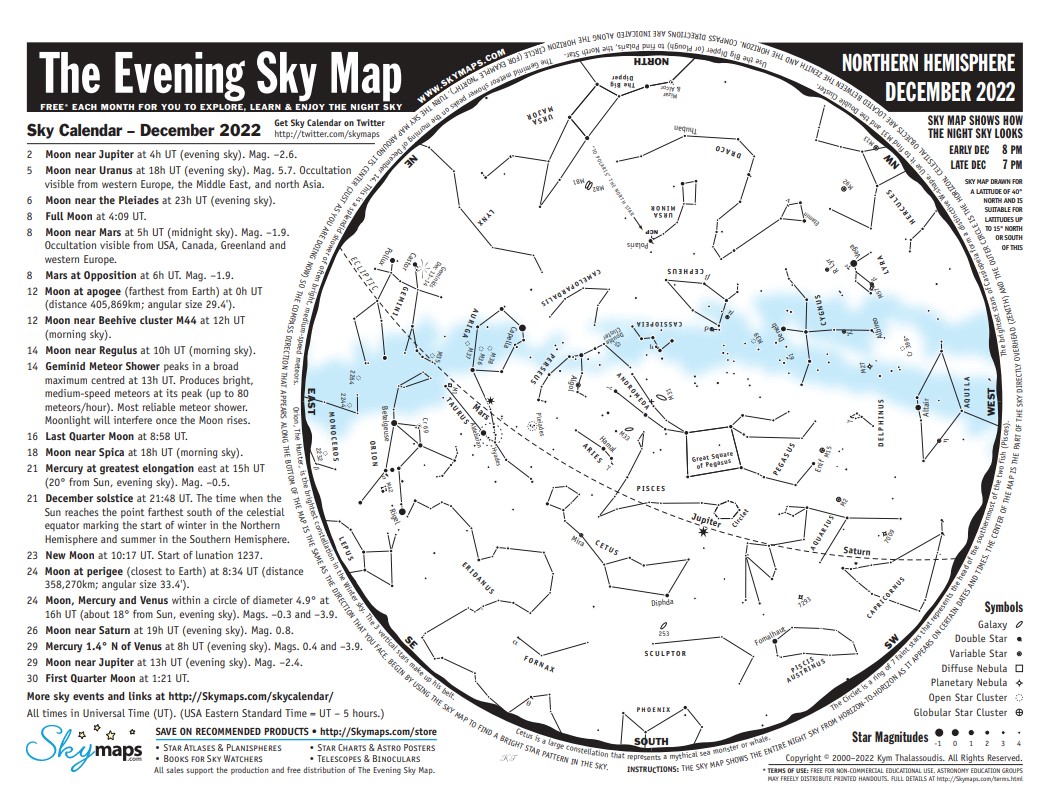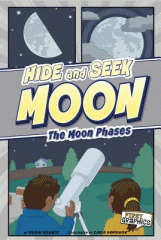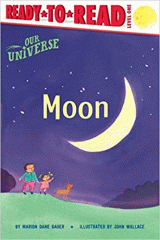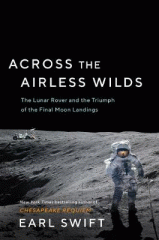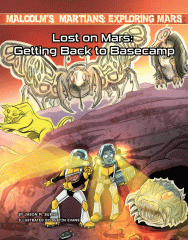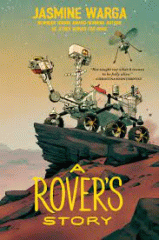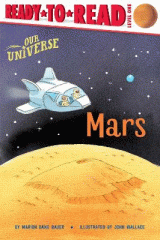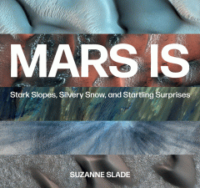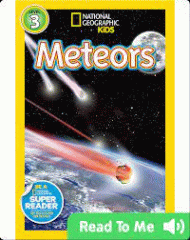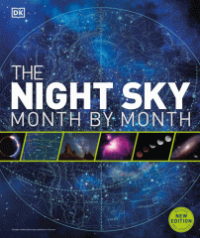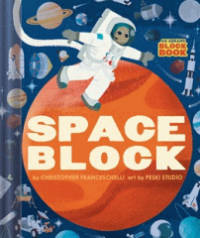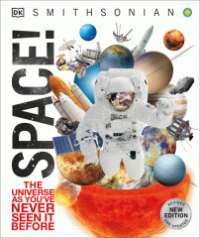
Welcome to The Far Out Space Blog! Ahoy, astronomers! Josh Urban here – host of the monthly CCPL Astronomy Club.
Previously on the CCPL Astronomy Club – In case you missed the November meeting, we compared notes about the “Blood Moon” lunar eclipse, learned how to find the stars Aldebaran and Capella, watched a video of the Artemis 1 rocket launch, and talked lots of space stuff. It was great fun! Mark your calendars, and bring your friends to the December meeting on Thursday, December 29th, at 6:00 pm.
Sky Happenings and How to See Them
There’s lots of fun stuff happening in December.
- Check out The Full Moon and Mars saying a close hello on December 7th. They’ll be nearest at 10:46 pm. It’s the day before the Mars opposition on December 8th.
- The “Full Cold Moon” is on December 7th, and wanes to the New Moon on December 23rd.
- The evenings of December 13th and 14th are a great time to look for the Geminid Meteors. Head outside a bit after dark and look east. This is where the constellation Gemini will be rising. The waning moon shows up later, washing out fainter meteors. Still, the Geminids are considered one of the year’s best meteor showers. Dress warmly, and find a comfy lawn chair. Watching for meteors can take a little while sometimes.
- Jupiter and Saturn glitter like Christmas ornaments, and Mars is rising earlier each night in the east.
- Can you find the constellations of Taurus and Auriga right near Mars? Note the yellow star Capella and red star Aldebaran twinkling brightly. Capella is the largest yellow star we can see in the night sky. Aldebaran is a red giant. If it were next to the Sun, it would be 518 times as bright!

Here’s a sky map for your travels, courtesy of Skymaps.com:
Shoutouts and Questions
Questions are not only fun, but how science works. Asking them is so important! Here are two nifty ones.
- “Jay” asks “What’s the coldest place in the solar system?” Well, Jay, I did a quick search, and they think it’s actually pretty close by (at least by cosmic standards): the “doubly shadowed” craters at the Moon’s south pole! They haven’t seen sunlight for billions of years. Estimated temperatures are – 414 degrees Fahrenheit. The coldest temperature measured on Earth was “only” – 128. Check out this article for more of the fascinating story. (And I thought it would have been an outer planet. If we count the Oort cloud, the coldest temperatures in our solar system might be found there.)
- “Dee” asks “What do astronauts eat?” I assumed that delicious freeze-dried astronaut ice cream, but actually, modern space travelers have pretty much the same diet as we do on Earth. (Big thanks to a parent who added this info at our last meeting. Now that’s the power of a club!) According to NASA, they don’t have refrigerators, though. Their salt and pepper are in liquid form. Grains would float away and cause trouble. Houston, we’ve got a problem. Jimmy’s got pepper in his eye.
Until Next Time
Have fun looking at the early winter skies. With the Geminid meteor shower, the meeting of the Moon and Mars, and the sparkling constellations, there are plenty of reasons to “grab your coat and snatch your hat” as you head outside to enjoy the views. (Try looking up the old song On the Sunny Side of the Street to get that pun.) Don’t let the cold stop you! Check out Ms. Sarah’s book recommendations, and head to the library when the skies are cloudy.
Happy Holidays, and see you on the 29th!
Clear skies,
– Josh
CCPL Astronomy Club is held on the last Thursday of every month, from September through May.
Register today to join us next time on December 29th at 6pm.
In the meantime check out some of these awesome books you can get from the library as well as some other great resources to learn more about this month’s topics!
Hide and Seek Moon: The Moon Phases by Robin Koontz
In graphic novel format, text and illustrations describe the eight phases of the moon.
Moon by Marion Dane Bauer
Everyone loves Earth’s little neighbor: the Moon! It lights up our night sky, guides our oceans, and so much more. Beginning readers will love learning all about the Moon in this new Level 1 Ready-to-Read.
Across the Airless Wilds: The Lunar Rover and the Triumph of the Final Moon Landings by Earl Swift
In this follow-up to the acclaimed New York Times bestseller Chesapeake Requiem, Earl Swift rediscovers the final three Apollo Moon landings, arguing that these overlooked missions–distinguished by the use of the revolutionary Lunar Roving Vehicle–were the pinnacle of human exploration.
Lost on Mars: Getting Back to Basecamp by Jason M Burns
Three interplanetary explorers arrive at the yardangs of Mars, a series of spellbinding rocky ridges that have been shaped by centuries of wind erosion. But the team runs into trouble when their portable navigation device gets damaged! Surrounded by inhospitable landscape, the explorers must rely on their knowledge of the animal navigation or risk getting stranded. As the team brainstorms ideas, Malcolm sketches out and imagines the yardangs as a haven for Martian predators. This graphic novel includes Mars facts and survival tips as well as in-depth content on animal adaptation and behavior. Backmatter includes an activity page and character information.
A Rover’s Story by Jasmine Warga
Built to explore Mars, Resilience begins to develop human-like feelings as he learns from the NASA scientists who assembled him, and as he blasts off and explores Mars, Resilience must overcome different obstacles as he explores the red planet.
Mars by Marion Dane Bauer
Explore the planet Mars in the second book in this new, nonfiction Level 1 Ready-to-Read series about the universe that’s perfect for kids who love science and space!
Mars Is: Stark Slopes, Silvery Snow, and Startling Surprises by Suzanne Slade
For centuries, people have been intrigued by Mars, and over time, scientists have made exciting discoveries, such as the planet’s Earth-like weather and seasons. But curious earthlings want to know more about the Red Planet. Does Mars have deserts? Volcanos? Or signs of life? Could people live there someday? Scientists decided to take a closer look. They built a powerful camera called the HiRISE (High Resolution Imaging Science Experiment) and loaded it onto a rocket. The rocket blasted off on August 12, 2005, and seven months later, the camera began orbiting Mars. It sent back surprising, revealing photos showing the world what Mars really is. Now, the world’s space community and NASA have renewed their exploration efforts, and interest in the Red Planet is in high gear.
Meteors by Melissa Stewart
Describes what are meteorites, and where they come from.
Rocket Says Look Up! by Nathan Bryon
Aspiring astronaut Rocket draws her community together to see a rare appearance of the Phoenix Meteor Showers, hoping especially that her big brother, Jamal, will look up from his phone.
Where are the Constellations? by Stephanie Sabol
Ancient people from many different cultures all looked up and imagined pictures in the sky by “drawing” a line from one star to another, like a connect-the-dots puzzle. These star pictures–constellations–represented myths and legends from the various cultures that still fascinate us today. Author Stephanie Sabol relates many of the most popular constellation stories and explains what stars actually are: how they formed, why they die, and how they’re grouped into constellation families.
The Night Sky: Month by Month by Will Gater
This comprehensive reference book shines bright with crystal-clear month-by-month charts of the planets, stars, and constellations in the northern and southern hemispheres.
The First Cat in Space Ate Pizza by Mac Barnett
Something terrible is happening in the skies! Rats are eating the MOON! There’s only ONE hero for the job, a bold and fearsome beast bioengineered in a secret lab to be the moon’s savior and Earth’s last hope! And that hero is … a cat. A cat who will be blasted into space! Accompanied by the imperious Moon Queen and LOZ 4000, a toenail clipping robot, the First Cat in Space journeys across a fantastic lunar landscape in a quest to save the world. Will these unlikely heroes save the moon in time? Can a toenail-clipping robot find its purpose in the vast universe? And will the First Cat in Space ever eat some pizza?
Spaceblock by Christopher Franceschelli
Go on a trip to the space museum and its planetarium to learn about outer space, other planets, astronauts, and more! The die-cut, peek-through, and foldout pages provide an extra layer of entertainment and interaction.
Space!
From the origin of the universe to the future of space rockets, this book about space for kids has it all. Did you know that the moon was once a piece of the Earth, and that a day on Venus is longer than one year? First published in 2015, Knowledge Encyclopedia: Space! has been completely revised and updated for 2020, with new images and information on all things space-related to send you rocketing to the furthest reaches of the cosmos. Newly updated with the latest scientific discoveries and innovation in space engineering, this new title will answer all your questions about what lies beyond the night sky. Discover how stars and galaxies are formed, take a trip through the Milky Way, and explore the innards of the International Space Station in this incredible book that uses the latest computer-generated 3-D imagery, eye-catching photographs, gripping information, and explanatory diagrams to bring the wonders of the cosmos to life.

